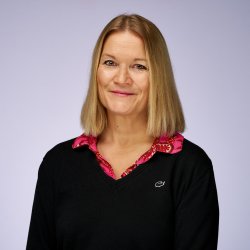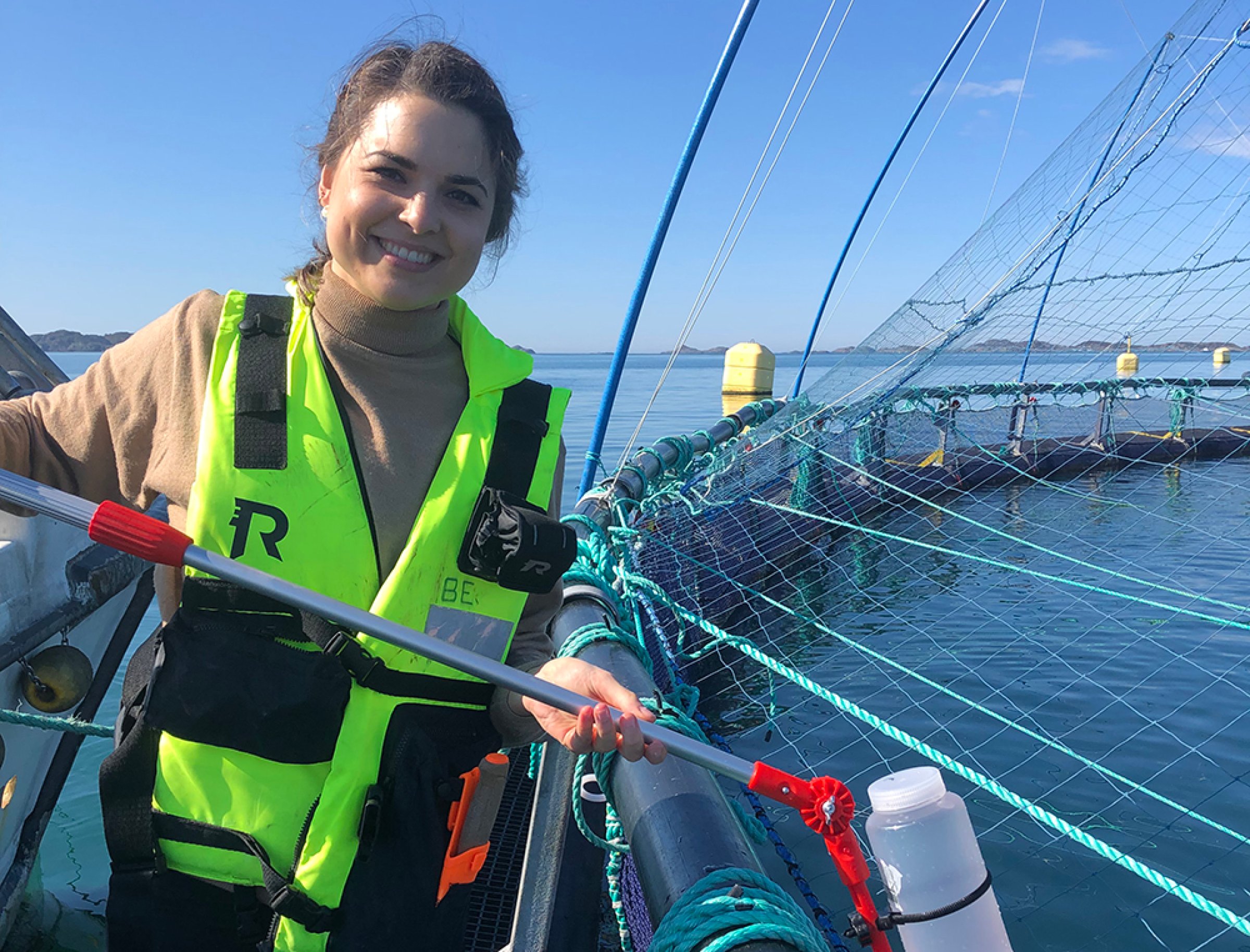
The study shows that the method has great potential for a more effective health monitoring of farmed fish than the traditional method used today.
The results from Lisa-Victoria Bernhardt's doctoral dissertation show that the virus (SAV), which causes pancreas disease (PD), can be detected earlier in seawater samples taken inside the net-pens compared to the samples taken from fish in the monthly samplings. She has also shown that the water filtration method can provide a more cost-effective, time-saving, resource-saving and not the least animal welfare-friendly approach for monitoring the virus (SAV) that causes PD in fish. This method can, in other words, make it possible for an earlier implementation of disease control measures. The methodology may also have the potential to be used to detect other infectious agents in water.
Viral diseases take many fish lives and cause significant losses to the industry
The farming of Atlantic salmon (Salmo salar L.) is an essential industry in the coastal areas of Norway. However, there are significant losses of fish during production in the seawater phase. Virus-related diseases are among the leading causes of mortality. Monitoring strategies are thus fundamental approaches in the health management of Atlantic salmon.
A method that could replace fish screening
One of the most severe viral diseases amongst salmon fish is pancreas disease (PD), caused by salmonid alphavirus (SAV) infection. The surveillance program for SAV/PD requires monthly sampling of at least 20 fish from each marine farm site, from all marine farm sites holding salmonid fish in Norway, with subsequent PCR analysis of heart tissue from the fish. Therefore, the focus of this study was to develop a filtration method for the detection of SAV in seawater to replace testing of fish by taking samples of their aquatic environment.
PCR is a method that amplifies many copies of a particular DNA sequence that can subsequently be detected. This technique makes it possible to detect the presence of the virus even if there is very little of it in a sample.
- The water filtration method can enable earlier detection of the virus' presence and has great potential to be implemented as an alternative to the method used today for monitoring the virus (SAV) at fish farms. This makes it possible to introduce measures for disease control earlier when the virus has been identified in the site or at a neighbouring area. In this way, it could be possible to prevent a further spread of the virus, says Lisa-Victoria Bernhardt. Her study was performed at the Norwegian Veterinary Institute for the SafeGuard-project, which was funded by the Research Council of Norway (267411). She successfully defended her PhD on September 17th at the NMBU Veterinary Faculty.
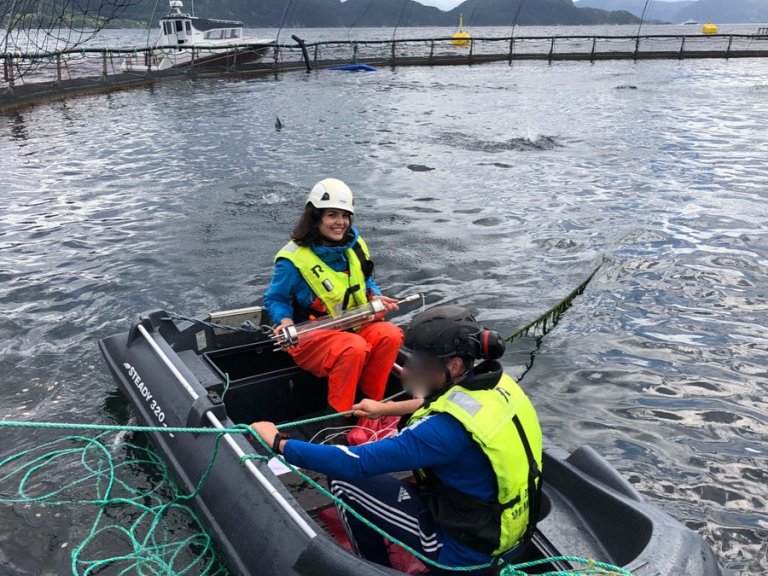
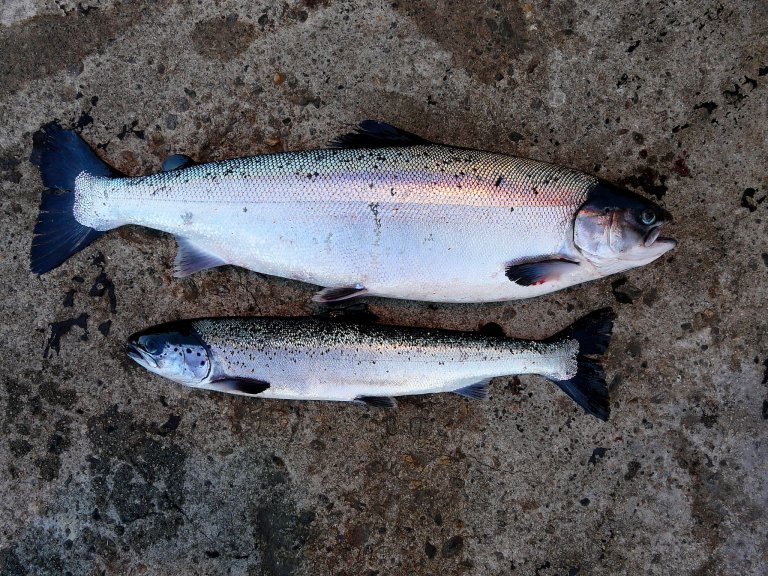
A study performed in three steps
The study was conducted in three steps, including an in vitro study performed in the laboratory, followed by a challenge study performed in seawater tanks, and lastly, a field study conducted in several different marine farm sites of Atlantic salmon.
The in vitro study
The in vitro study, which was performed under more controlled conditions at the laboratory, involved the addition of the virus (SAV) to artificial and natural seawater. This study contributed important information for the method development without involving any fish. In this study, the virus was concentrated from the water samples through electrofiltration, a method involving membrane filtration, which is (simply explained) the movement of the electrically charged virus particles in the samples. The highest SAV concentrations from the water samples were found when combining an electronegatively charged filter with a lysis buffer. Lysing buffer inactivates the virus by dissolving the capsid protein, which encapsulates the genetic material of the virus. This study resulted in the first PhD paper (Weli et al. 2021).
The challenge study
The challenge study was carried out as a so-called cohabitation challenge model with post-smolt Atlantic salmon. A cohabitation model means that SAV-injected fish ("infection spreader") were combined with non-injected fish ("cohabitant fish") in the same tank. Subsequently, samples of cohabitant fish and seawater were taken in parallel at several different sampling time points during the challenge study for comparison. A relationship was then found between the samples. With an increasing amount of SAV in the seawater there was also an increasing amount of SAV in the fish tissue samples.
Also, in this study, an electronegatively charged filter combined with lysis buffer was found to be the most suitable method for detecting SAV from seawater. This study resulted in the second PhD paper (Bernhardt et al. 2021a).
.jpeg)
Field study at several marine farm sites
During the field study, the water filtration method was tested first in a pilot study by taking seawater samples from different water depths and sampling points from a PD-diagnosed net-pen. Based on the results from this pilot study, the water filtration method was further tested by taking samples of seawater from the top layer within all net-pens from several different Norwegian marine fish farm sites. These sites did not have a registered presence of SAV at the start of the more comprehensive field study. Water sampling occurred in parallel with fish sampling in connection with the surveillance program for SAV/PD. This study resulted in the third PhD paper (Bernhardt et al. 2021b).
More findings
Seawater samples collected from inside the net-pens and run through the water filtration method, showed that the virus (SAV) could be detected earlier than the samples taken from fish. Another finding was that the lower the SAV concentrations were in the seawater samples, the longer time it took until SAV was detected in the fish samples. This confirms that the water filtration method has great potential to monitor fish farms to enable early detection of SAV infection.
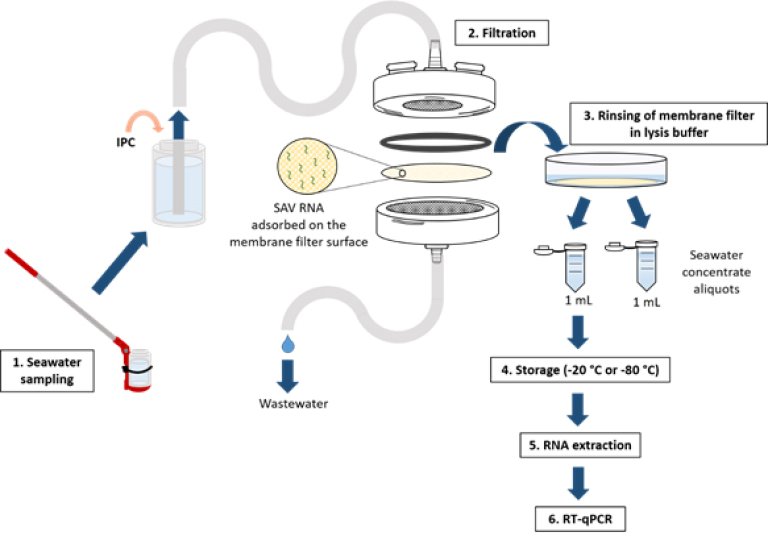
Facts about Pancreas disease (PD):
- PD is a severe disease in salmonids, and causes significant financial losses in aquaculture due to poor growth and reduced slaughter quality.
- The disease is caused by a virus called salmonid alphavirus (SAV) or PD virus
- So far there are seven known genotypes of SAV, two of which (SAV2 and SAV3) are known in Norway.
- SAV1 causes PD in Scotland and Ireland.
- SAV2 is known from freshwater-farmed rainbow trout in France and Scotland, and a marine variant of SAV2 causes PD in salmon in Scotland and in Central Norway.
- SAV3 is endemic to salmon and rainbow trout in western Norway.
- SAV4 has been detected in Ireland and Scotland, whereas SAV5 and SAV6 has so far only been detected in Ireland.
- A recently discovered genotype, SAV7, has been detected in ballan wrasse in Ireland.
- The main reservoir for SAV is infected fish at marine aquaculture sites. The disease is transmitted both within a site, to other sites within the same fjord system and through transport of infected fish.
References:
Weli SC, Bernhardt LV, Qviller L, Myrmel M, Lillehaug A. Development and evaluation of a method for concentration and detection of salmonid alphavirus from seawater. J Virol Methods. 2021 Jan;287:113990. doi: 10.1016/j.jviromet.2020.113990. Epub 2020 October 6th. PMID: 33035567.
Bernhardt LV, Myrmel M, Lillehaug A, Qviller L, Chioma Weli S. Concentration and detection of salmonid alphavirus in seawater during a post-smolt salmon (Salmo salar) cohabitant challenge. Dis Aquat Organ. 2021a Mar 25;144:61-73. doi: 10.3354/dao03572. PMID: 33764314.
Bernhardt LV, Lillehaug A, Qviller L, Weli SC, Grønneberg E, Nilsen H, Myrmel M. Early detection of salmonid alphavirus in seawater from marine farm sites of Atlantic salmon Salmo salar. Dis Aquat Organ. 2021b Sep 9;146:41-52. doi: 10.3354/dao03618. PMID: 34498609.
Bernhardt LV. Development, optimization and field testing of a filtration method for detection of salmonid alphavirus in seawater. Thesis number 2021:38, ISSN 1894-6402, ISBN 978-82-575-1808-0
https://nmbu.brage.unit.no/nmbu-xmlui/handle/11250/2823247
Contact:
Lisa-Victoria Bernhardt
Linkedin: https://www.linkedin.com/in/lisa-victoria-bernhardt
Email: lv.bernhardt@gmail.com
